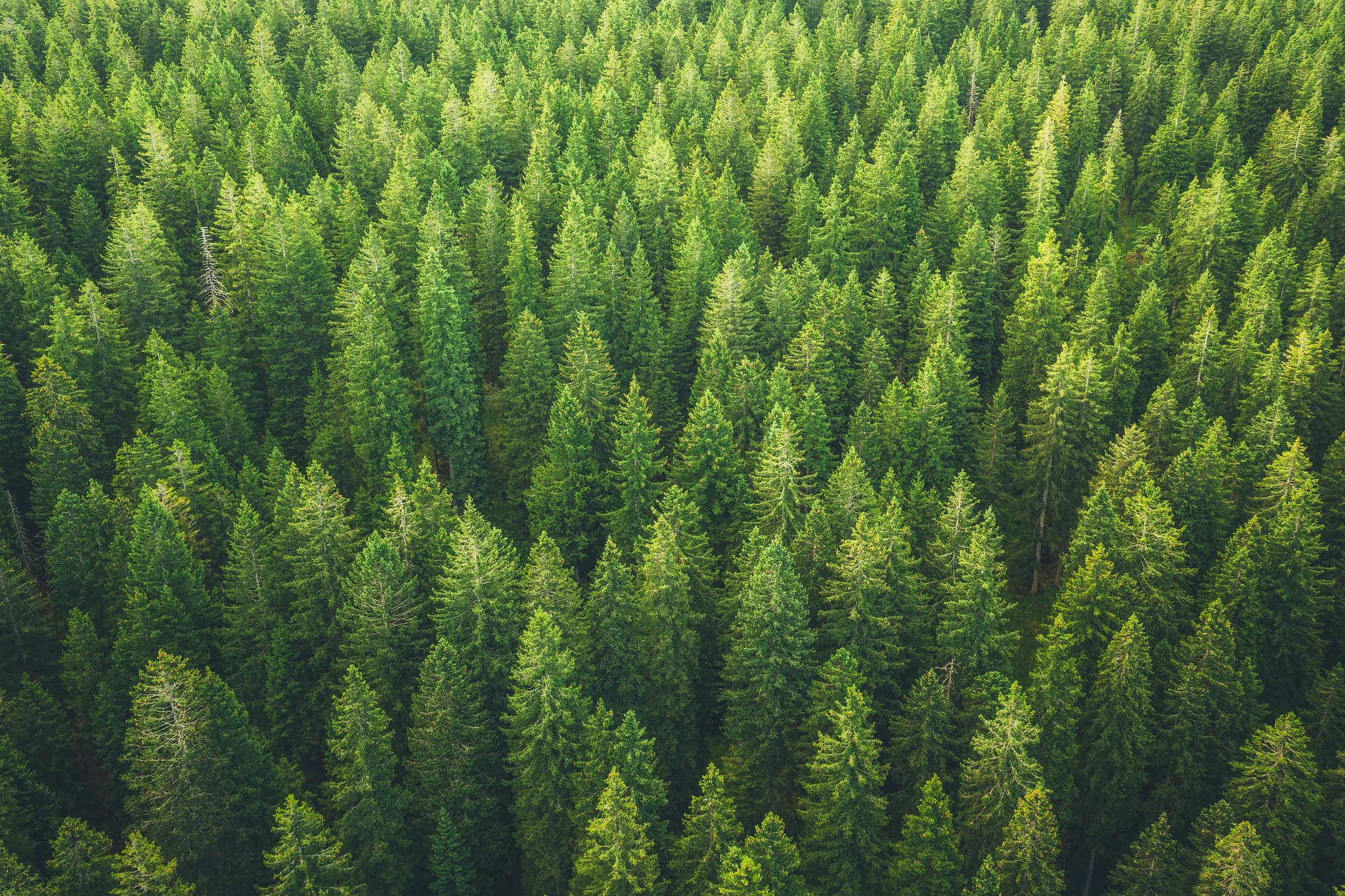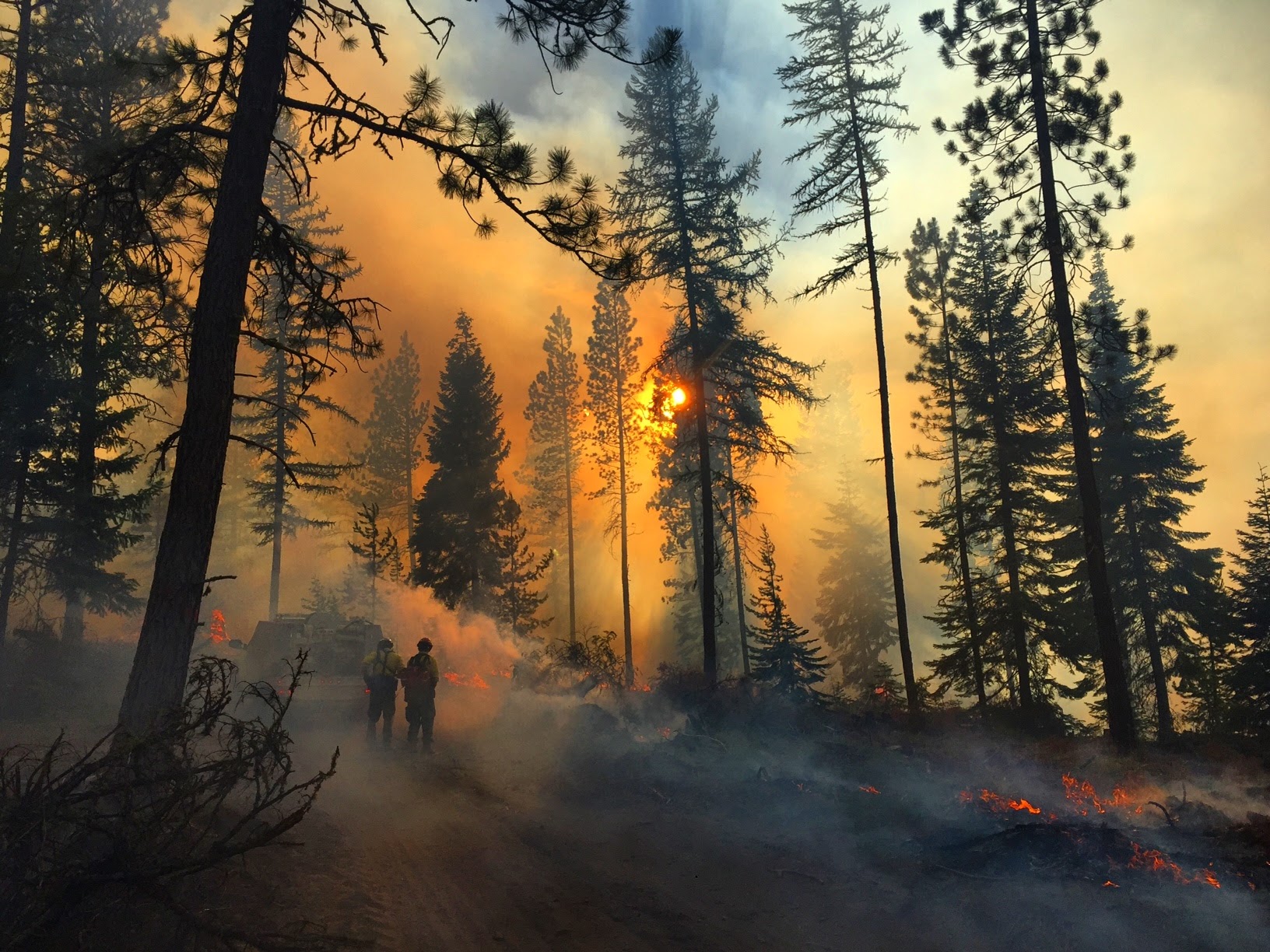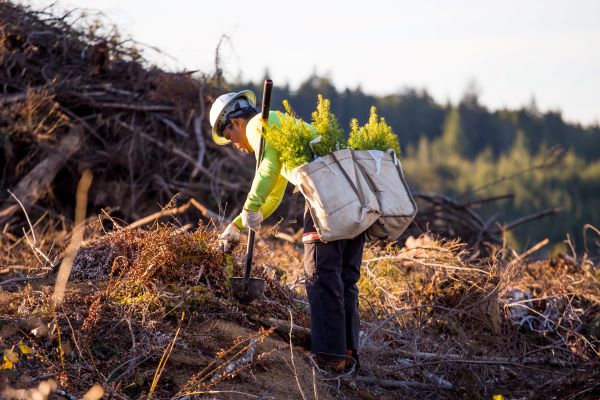WE ALL WANT TO SEE OREGON THRIVE
Solution to Climate Change
Oregon’s working forests— forests that are planted, cultivated, harvested, and replanted in a sustainable cycle— absorb significant amounts of carbon from the atmosphere. More than half of Oregon’s annual human-caused carbon emissions are captured and stored by its 30 million acres of forest, helping keep our atmosphere clean. When trees are harvested for lumber, the stored carbon remains locked up for the life of the product. And sustainable forestry practices ensure this cycle continues by requiring harvested areas be replanted. In fact, Oregon foresters plant roughly 40 million trees every year – at least three trees for every one tree that is harvested. Similar to children, young trees’ growth requires a lot of energy to grow. By harvesting older trees that have already stored tons of carbon as wood, we make room for these new forests of young trees that pull carbon out of the air at a faster rate.
Renewable Building Materials
Buildings can be constructed using a variety of materials, including concrete, steel, and wood, but only one material is renewable. Trees can be replanted. Steel cannot. Plus, wood can be repurposed from one building to the next, all while the carbon remains safely stored. By promoting the use of renewable wood products instead of carbon-intensive alternatives, Oregon can continue to be part of the solution to climate change.
Wildfire Prevention
Evidence-based forest management practices are key to preventing wildfires. With the risk of devastating wildfires expected to increase in the coming decades, implementing these practices is more important than ever. Some methods used to prevent devastating wildfires include mechanized harvest, tree thinning, and controlled burning.
- Mechanized harvest removes trees for lumber production but also minimizes the amount of fuel available for a wildfire. Harvest can include removal of an entire stand of trees, or selective harvest of just some trees.
- Tree thinning selectively reduces the number of trees in a given area, removing small or sick trees that overcrowd the forest and can fuel wildfires while simultaneously retaining and making more space for healthy trees that are more fire resilient.
- Controlled burning, also known as prescribed burning, involves setting planned fires during cooler, wetter times of the year when fires are controllable. This rids the forest of underbrush and debris that could otherwise feed a wildfire. After the fire, the ashes return nutrients to the soil and the additional sunlight and open space help young trees to grow and thrive.
An additional benefit of managed forests in the efforts to fight wildfires, is the extensive and well-maintained network of roads that foresters create and use. Roads ensure reliable, steady access to forests . When a fire does occur in a managed forest, it is more easily put out, because firefighters have easy and quick access to the fire.
Wildlife in Managed Forests
Forest management also focuses on creating and sustaining wildlife habitats. This is done by maintaining a mosaic of forest types across the landscape. For exacmple, young forests with open canopy provide habitat for migratory songbirds and pollinators, and provide forage for deer and elk, as well as hunting ground for birds of prey. Older forests, on the other hand, offer cover where wildlife can rest, and nesting opportunities for birds that need closed canopy forests. Managed forests also provide habitat for aquatic species such as beaver and salamanders, plus critical spawning areas for salmon and other fish native to Oregon. Maintaining a variety of forest types ensures all of Oregon’s wildlife have the habitat they need to thrive.
Recreation Opportunities
Studies have shown that, time spent in nature results in a variety of cognitive and emotional benefits. Being surrounded by trees increases feelings of calm, endorphin levels, and the capacity for concentration, as well as reducing anxiety, depression, and the stress hormone cortisol. Hiking, camping, cycling, hunting, and fishing are just a few of the possible activities Oregonians can enjoy in our forests. Often, private forestland owners open their lands to recreationalists because they know Oregonians benefit from ample recreation opportunities. Not only do professional foresters work to manage the land, timber, and other resources for future generations, but they, too, enjoy the beauty and benefits of the forest.
WE ALL WANT TO SEE OREGON THRIVE | Discover For The Trees
Join Us Home Page Form

A SOLUTION TO CLIMATE CHANGE.

TREES ARE A NATURAL SOLUTION.

WOOD PRODUCTS STORE CARBON LONG-TERM.

OREGON IS A NATIONAL LEADER IN PROFESSIONAL FOREST MANAGEMENT.

TIMBER INDUSTRY AND ENVIRONMENTAL GROUPS ARE WORKING TOGETHER.
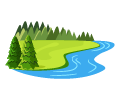
NEW RULES KEEP WATER CLEAN AND COLD.

RECREATIONAL OPPORTUNITY FOR ALL OREGONIANS.

PRIVATE FORESTS PROVIDE AN ARRAY OF ACTIVITIES.

WORKING FORESTS MAINTAIN THE BEAUTY AND BENEFITS OF THE LAND.
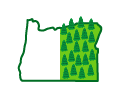
Over half of Oregon – or roughly 30 million acres – is forested.

The level of timber harvest is renewing every year.

OREGON IS THE NUMBER ONE NATIONAL PRODUCER OF SOFTWOOD LUMBER AND PLYWOOD.
OREGON DEPARTMENT OF FORESTRY SERVES AS THE FIRE DEPARTMENT FOR MORE THAN 16 MILLION ACRES OF FORESTLAND.
LOCAL TIMBER COMPANIES PROVIDE PROFESSIONALS AND EQUIPMENT TO HELP ODF FIGHT FIRES.
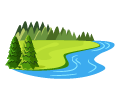
FOREST TYPES FOR EVERY WILDLIFE HABITAT.

WILDLIFE NEED BOTH YOUNGER AND OLDER FORESTS.

